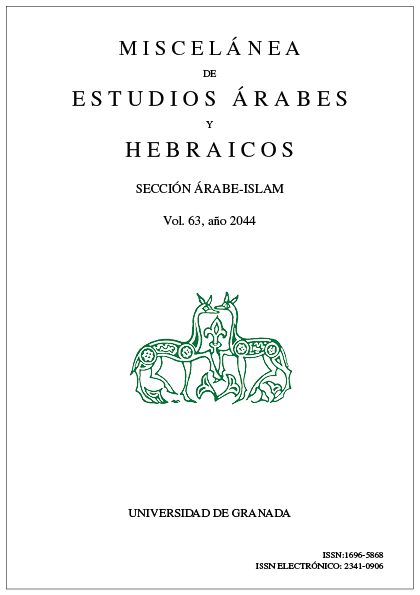The Arabic origin of the name of the large earthenware nasrid jars of Granada: inšibār or inŷibār
Keywords:
Large earthenware jars, Nasrid period, Alhambra, Granada, Inšibār, InŷibārAbstract
The large earthenware jars from the Islamic period of Granada were made out of a deep red-coloured clay well suited for the cooling of water, something very important in hot summers. These earthenware jars of the Nasrid period were also named after this type of clay: inšibār or inŷibār.
Downloads
Downloads
Published
How to Cite
Issue
Section
License
The authors publishing their work in this journal agree to the following terms and conditions:
1. The authors retain the copyright and give the journal the right to be the first publication of the work and also to be licensee under a Creative Commons Attribution License which allows others to share the work, provided the author of the work and the initial publication in this journal are acknowledged.
2. Authors may make additional agreements separately for the non-exclusive distribution of the version of the work published in the journal (for example, putting it in an institutional repository or publishing it in a book), with acknowledgement of its initial publication in this journal.
3. Authors are allowed and encouraged to electronically disseminate (for example, in institutional repositories or on their own web page) the published version of their works (publisher's post-print version) or, if not possible, the author's reviewed and accepted post-print version. This is to facilitate productive exchanges, and allow for earlier and greater citation by third parties of the published works (See The Effect of Open Access).
4. The journal accepts no responsibility for the opinions expressed by the authors.















